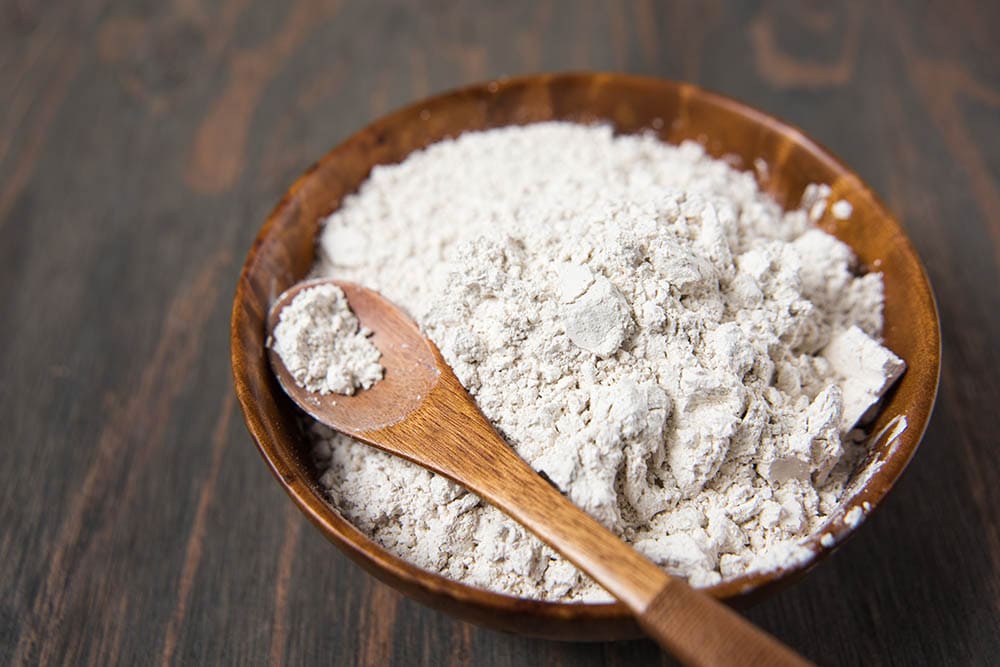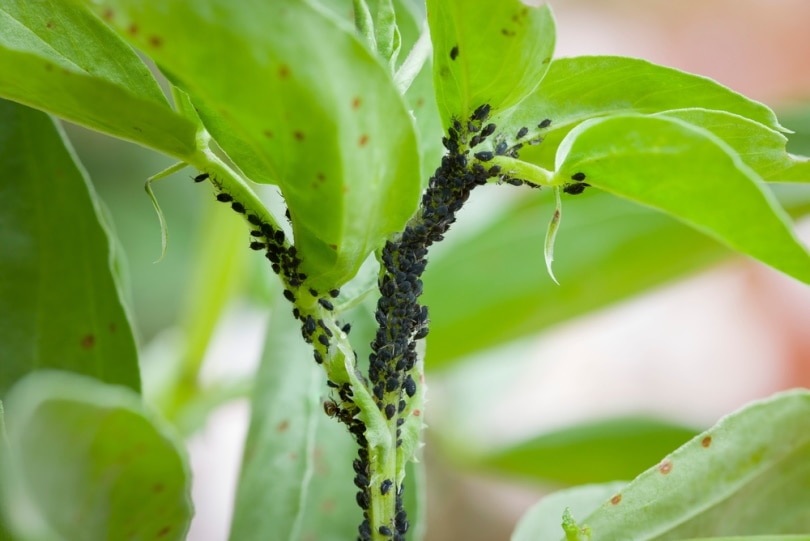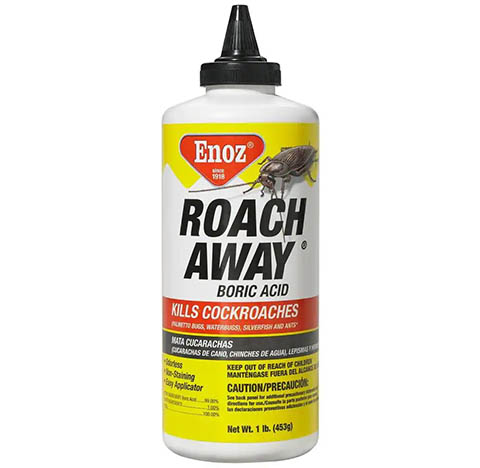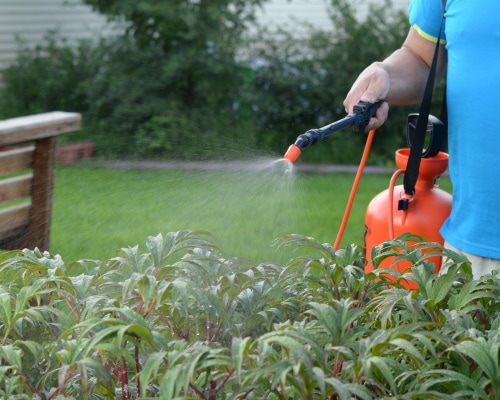How to Get Rid of Termites in Your Garden: 11 Methods That Work
-
Pete Ortiz
- Last updated:

Termites live in colonies and feed on plant matter and wood. Their diet is mostly made of decaying or dead plant matter. This makes a garden or backyard a suitable environment for them to thrive. Here, they are considered pests because of the severe destruction they can cause.
A colony of termites may consist of around 60,000 worker termites. A colony that is more than 5 years old can contain more than a million termites. So, a termite infestation in your garden or backyard can be disastrous.
It’s wise to look at the signs of termite infestations so that you can take the right action to eliminate them. If you spot them in your backyard, it shows they have found a food source. This article looks at the types of termites that infest gardens and backyards, the signs and effects of termite infestations, and how to get rid of them. Keep reading for deeper insight.
Effects of Termite Infestation in a Garden
Termites play a crucial role in recycling and decomposing dead wood. This helps bring the right balance among living organisms in a garden or backyard. However, they can also cause severe damage to your property, leading to massive losses.
They feed on different plant materials such as humus, leaves, bark, and droppings of herbivores. When their food resources are eliminated, they start feeding on wood on your property structures. They can also destroy shrubs and trees in your backyard.
Besides feeding on structures in your backyard, they can also access your house and destroy floors, furniture, cabinets, and ceilings. The damage can also extend to other materials with cellulose such as clothes, books, carpets, and photo frames.
- Wood Damage: Termite-damaged wood sounds hollow when tapped on. You may also find wood pellets and powder in areas they burrow into.
- Discarded Wings: Termites usually cast off their wings when they find a new place to create a new colony. You can find discarded wings around window grills or doors.
- Shelter or Mud Tubes: Termites create shelter tubes with the dirt of the wood particles cemented by their saliva and other fluids. The tubes ensure moisture content and temperature is right for them to breed and thrive. You will often find the tubes on attics, cracks, and walls.
- Brown Pellets of Excrement: Termite droppings are small and ridged dark brown pellets. You will find them near the mud tubes where they feed and nest. The more fecal pellets you find, the bigger the infestation.
- Noise: You may hear tapping noises as the soldiers knock their heads against the wall after sensing danger. Workers also produce clicking sounds as they move through the wood.

The 11 Effective Ways to Get Rid of Termites
When you note any of the above signs, they indicate that your garden and backyard are already infested with these pests. Here are some practical ways to get rid of them:
Natural Methods
1. Use Beneficial Nematodes
Nematodes are microscopic parasites that can prey on termites, killing them in all their life stages. You simply add the nematodes to water and pour them into the termite nest opening. They are safe and don’t adversely affect other beneficial insects such as earthworms and ladybugs. They are also safe for people, pets, and plants.
Nematodes work by entering the termites’ bodies and feeding on them. As they feed on the termites, they release bacteria, causing blood poisoning, leading to their death. Once one termite is dead, the nematodes move on to the next. They are effective for a long time since they breed and multiply, ensuring that all the termites are killed. They are also fast-acting and can eliminate the termites within 24–48 hours. When all the termites are eliminated, the nematodes die and biodegrade the soil.
2. Diatomaceous Earth

This is a type of sand made with fossilized algae. It’s safe for humans but dangerous for pests. It contains razor-sharp particles with sharp edges that cut through the termites’ outer layer when they get into contact with it.
Moisture escapes from the termites’ bodies when the outer layer is cut. Diatomaceous earth has the absorptive ability, thus drawing all the moisture from the body. This affects the termites’ water balance, leading to their death.
You first need to remove all moisture sources or fix all the leaks in your backyard. This is necessary because termites are attracted to moisture. Apply a 2-inch layer of the diatomaceous earth to all areas where you find signs of pest infestations. You can also apply it in your basement, attic, or crawl to create a barrier.
3. Clean Up Your Property
The best solution to keeping termites away is keeping your garden and backyard free from things that can attract pests. Termites feed on wood and other debris. Ensure you have at least 6 inches of space between the ground and wood or wooden materials. Avoid stacking firewood against your house or fence and get rid of old tree stumps. This will make your garden less favorable to the termites and save you the job of having to fight the infestations.
Homemade Solutions
4. Boric Acid
Boric acid works as a natural wood preservative and pesticide. When the termites consume and digest the acid, it tampers with their metabolic and digestive system, eventually causing death due to starvation. The acid is available in powder form.
You can spray it in its original powdery form or mix it with water. Add a teaspoon of the acid to 1 cup of warm water in a spray bottle. Shake the spray bottle until the mixture gets dissolved and spray in all areas you see signs of termite infestation.
5. Cayenne Pepper
Cayenne Pepper contains capsaicin, a chemical that makes it spicy and hot. These chemicals damage the termites’ nervous system, thus killing them. It’s an organic method, so it doesn’t adversely affect the environment, people, or pets.
If a small area is infested by termites, sprinkle the pepper around and repeat for around 4–5 days or until all the termites are eliminated. You can also create a paste by mixing the pepper with vegetable oil.
6. White Vinegar

White vinegar eliminates termites fast. Make a concoction by mixing a ½ cup of vinegar with lemon juice. Put the mixture in a plastic spray bottle to spread easily over the termite-infested areas.
Spray it into the shelter tubes and all the mounds you see. You should also spread it on all wooden structures, corners, or fences with signs of termite infestations. Repeat the process for a few days until you no longer see the termites.
When white vinegar gets into contact with termite bodies, it gets deep into the crevasses and grooves to kill them. The acetic acid in vinegar corrodes the termite exoskeletons, thus destroying them and eventually leading to their death.
7. Salt
Concentrated salt helps kill the termites by dehydrating them. Simply mix warm water and salt in a quart jar. Ensure you put in more salt to enhance effectiveness. Fill your syringe with the mixture and squirt it into all the entry and exit points of the termite homes.
After administering it to these spots, you can also use the mixture preventatively by spreading it around the house or other areas with a higher risk of infestation. This is a great solution for eliminating a smaller termite infestation.
Baits or Traps
8. Cardboard Bait System

You can create a cardboard bait system to get rid of the termite infestation. It’s not a one-time solution, so you will need to use it several times. You should apply a poison treatment recommended by a pest control professional.
Wet the cardboard with cellulose, then leave it for a few days. Place it in the most affected parts of your backyard. The termites find it a great food source, so they will flock to the wet cellulose. They also flag other termites in their colony to come and feed on the wet cellulose on the trap.
When the termites are lured to the cardboard, remove and burn it to kill all the trapped termites.
9. Create a Bait Station
A bait station approach can also help remove termites from your garden or backyard. The bait station consists of cylindrical vessels containing a small amount of cellulose, wood, or even paper with a substance that poisons the termites.
Put the stations down into the ground and allow the top flush to be at the same level as the soil. The idea is to attract the termites to eat the poison and take it to the nest and kill all the termites in their colony.
Spread the bait stations at intervals of 10–20 feet from one another in areas you suspect to have a termite infestation.
Essential Oils
10. Neem Oil

Neem oil is an effective pest control solution. It works by interrupting the reproductive system of the termites. Once the termites consume the neem oil, it alters their hormonal system, making them forget to mate and eat.
The termites stop laying eggs, meaning they no longer reproduce new ones. Since they don’t eat, they also start dying fast. Besides, neem oils produce a smell that repels the termites, keeping them away from your garden.
You can make a DIY mixture using crude or raw neem oil. Emulsify it with mild liquid soap. Mix liquid soap with neem oil and water. Ensure you add the water first and stir in the oil. Then, put the mixture into a plastic spray bottle and use it as needed, preferably immediately after you make it since the ingredients lose their power after 8 hours.
11. Orange Oil
Orange oil is a great termite killer, and it is safe for humans and pets because of its low toxicity. The oil is derived from orange rinds. It kills the termites at the early stages of the infestation. The oil may not be effective in eliminating severe infestations.
Apply the oil to the mud tubes or infested areas and wait for it to work its magic.
Types of Termites that Infest Gardens
There are three types of termites that may likely infest your garden and backyard.
1. Dampwood Termites

Dampwood termites are common in damp decaying matter, especially wood. You will find them in logs, old trees, and stumps. They attack pilings, utility poles, and fence posts. Their intestines feature specialized microbes that help them digest wood.
Dampwood termites can grow up to 25 millimeters long, including the wings. They have a large head, featuring pincers on the front. These termites like having regular contact with high humidity and water for survival.
These termites don’t make shelter tubes and can live within the wood they feed on. They create openings into the wood and use fecal pellets to conserve humidity.
2. Drywood Termites
Drywood termites have distinct sizes depending on the castes. Soldiers are about 3/8 of an inch, while the reproducing ones are around 1/2 an inch. They are pale brown, although they may vary between light yellowish tan and dark brown.
These termites eat across the grain of wood, destroying the hard and soft summerwood growth. They don’t require water or moist soil nearby to thrive. Thus, you will see them in dry wood above the ground, as they don’t require a ground connection to survive. You will find them mainly in attics.
3. Subterranean Termites
These termites have a dark brown to creamy white and black color. They also have four wings of the same size with rounded tips, straight antennae, thick waists, and shorter legs.
Their size differs depending on their caste, with workers measuring 1/8–3/8 of an inch. Workers and soldiers are the same size but with bigger heads and strong mandibles. The workers live in dark tunnels, both below and above the ground. Even without eyes, they can differentiate between dark and light. They create mud and shelter tubes to access food sources. The tubes also protect them against predators and open air.
They live in the soil and also in damp wood where they can access moisture. You see them swarm during the spring when they move to start a new colony.
Conclusion
Dampwood termites, drywood termites, and subterranean termites are the three major termite categories likely to invade your yard, damaging structures, trees, and shrubs. You can detect their infestation through signs such as wood damage, discarded wings, shelter or mud tubes, brown pellets of excrement, and tapping noises.
It’s good to prevent their infestation by keeping your backyard and garden free from things that attract them. However, if your garden is already infested, you need to use the most practical and efficient method to eliminate them.
You can use different methods such as traps and bait, homemade solutions like vinegar and cayenne pepper, or use beneficial nematodes and diatomaceous earth. All these methods are effective, but you can choose one that is more convenient for you based on the extent of the termite infestation.
- A Review of the Evolution of Termite Control
- Management Tactics for Termites Infesting Organic Vegetables
- What Homebuilders Need To Know About Termites
- BUG OFF: 5 EFFECTIVE WAYS TO GET RID OF TERMITES IN GARDEN
- What to do if you’ve Found Termites in Your Yard or Garden?
- How to Get Rid Of Termites in Your Garden – Organically!
Featured Image Credit: Kampus Production, Pexels
Contents






